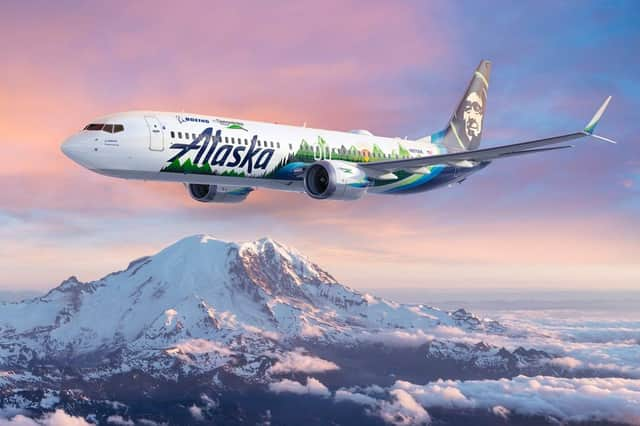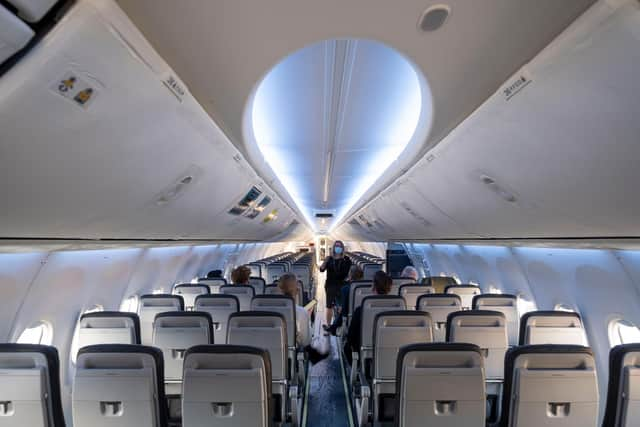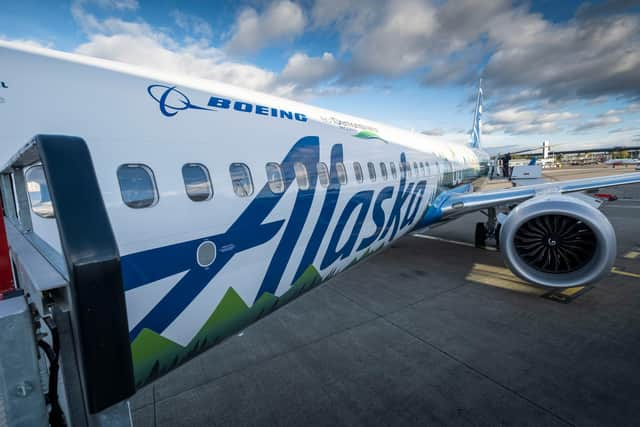Air flight emissions: Why an Alaska Airlines jet is 3,000 miles off course in Glasgow – Alastair Dalton


With the Cop26 climate change conference just weeks away, expect to see other transport operators making a beeline for Scotland to highlight the lengths to which they are going to become greener.
But aviation – as well as shipping – has the most work to do on their environmental credentials, so it’s not surprising the jet flew in to demonstrate a range of fuel-saving research projects being undertaken by its manufacturer Boeing.
Advertisement
Hide AdAdvertisement
Hide AdThe industry knows that zero-emission flights, such as electric or hydrogen, are still decades away for all but the smallest aircraft.
But even the main lower-emission alternative to kerosene, known as sustainable aviation fuel or Saf, and produced from waste materials such as cooking oil which reduce emissions by up to 80 per cent, is also some way off widespread use.
Which means the current focus is on eking out every last drop of jet fuel so less is burnt.
In Alaska Airlines’ case, that means things like pilots using only one engine while taxiing on the ground, which it said saved, surprisingly, almost one per cent of fuel, and wire-less tyre pressure monitors to reduce weight.
For Boeing, the airline’s partner for its 737-9 “ecoDemonstrator” aircraft, even exterior anti-collision warning lights are being remodelled so they stick out less and reduce drag, while the cabin walls are made of recycled carbon fibre to further cut fuel use.


More aerodynamic winglets – curved sections of the tip of wings to help generate lift and save fuel – were developed on one of Boeing’s previous ecoDemonstrator aircraft in 2012.
Coinciding with the latest aircraft’s visit, First Minister Nicola Sturgeon announced a Boeing-funded Newton Flight Academy would be established at Glasgow Science Centre next year to encourage young people to consider science, technology, engineering and maths-related careers to help develop sustainable technology.
It got me thinking that flying isn’t the environmental enemy – its the emissions it produces.


Advertisement
Hide AdAdvertisement
Hide AdOn balance, long-distance travel – and most of it is by air – has arguably been a force for good, helping develop international co-operation and understanding, trade and culture. Far more than holidays in the sun.
Limiting air travel is not realistic. It’s the impact that must be curbed – and that must also outpace aviation’s expected growth.
That’s because less than 20 per cent of the world’s population has travelled by air, as Boeing’s chief sustainability officer Chris Raymond underlined to a presentation on Tuesday beside otherwise deserted boarding gates at Glasgow Airport, which had been used, pre-Covid, by thousands of passengers a day.
He put the challenge in a nutshell: “As more of the world enjoys it [air travel], we have to grow more sustainably.”
The airline executive described the process as the “relentless pursuit of fuel efficiency which equals carbon-emission reduction that goes on every day in the industry”.
Whatever your views on the environmental impact of flying, that’s a laudable aim, but one that we must ensure does not let up.
A message from the Editor:
Thank you for reading this article. We're more reliant on your support than ever as the shift in consumer habits brought about by coronavirus impacts our advertisers.
If you haven't already, please consider supporting our trusted, fact-checked journalism by taking out a digital subscription.
Comments
Want to join the conversation? Please or to comment on this article.
